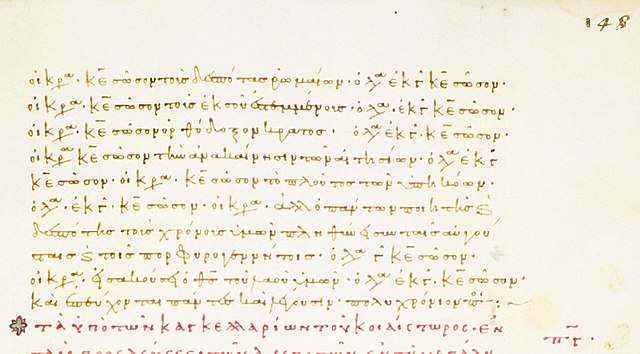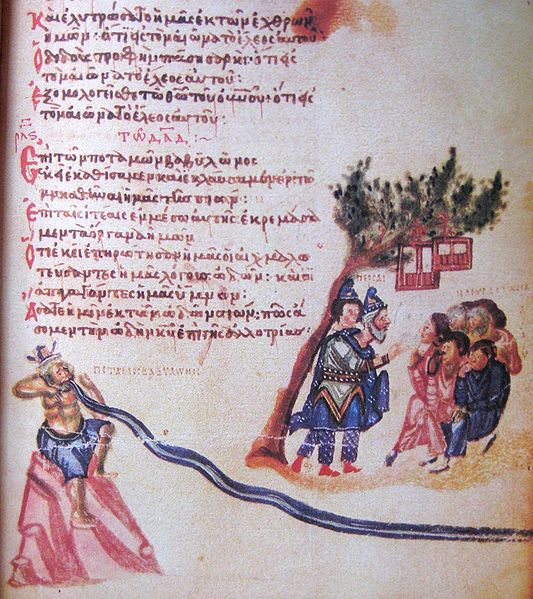Romanos the Melodist was a Byzantine hymnographer and composer, who is a central early figure in the history of Byzantine music. Called "the Pindar of rhythmic poetry", he flourished during the sixth century, though the earliest manuscripts of his works are dated centuries after this. He was the foremost Kontakion composer of his time.
Icon of Romanus the Melodist (1649)
Romanos and Virgin Mary, Miniature from the Menologion of Basil II
Byzantine music originally consisted of the songs and hymns composed for the courtly and religious ceremonial of the Byzantine Empire and continued, after the fall of Constantinople in 1453, in the traditions of the sung Byzantine chant of Eastern Orthodox liturgy. The ecclesiastical forms of Byzantine music are the best known forms today, because different Orthodox traditions still identify with the heritage of Byzantine music, when their cantors sing monodic chant out of the traditional chant books such as the Sticherarion, which in fact consisted of five books, and the Irmologion.
Acclamation during the Louperkalia feast (15 February) at the hippodrome according to the Book of Ceremonies, book I chapter 82 (D-LEu Ms. Rep I 17, f.148r)
Chludov Psalter, 9th century (RUS-Mim Ms. D.129, fol. 135) River of Babylon as illustration of Ps. 137:1–3
Chludov Psalter, beginning of the canticles
Recitation of Psalm 85 κλῖνον, κύριε, τὸ οὖς σου καὶ ἐπάκουσόν μου "on Monday evening" (τῇ β᾽ ἑσπερ) in echos plagios devteros with a preceding troparion καὶ ἐπάκουσόν μου· δόξα σοι, ὁ Θεός in a liturgical manuscript around 1400 (GR-An Ms. 2061, fol. 4r)






